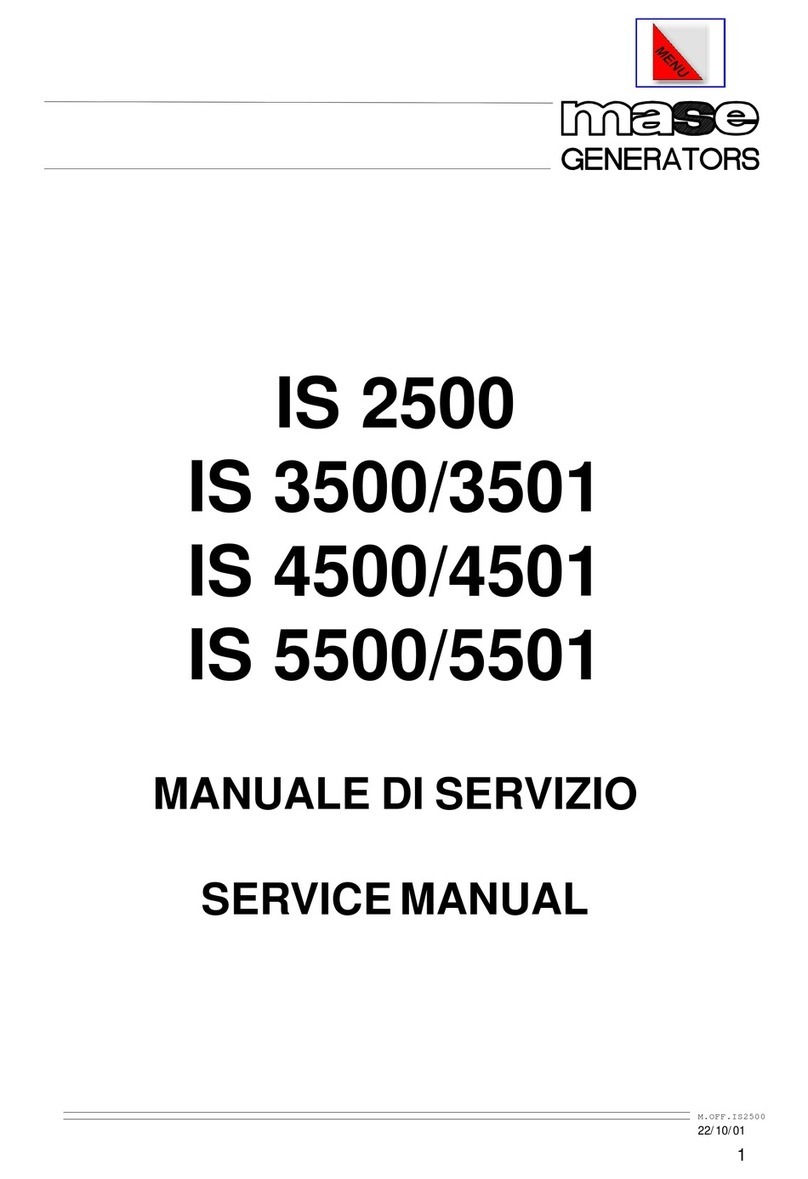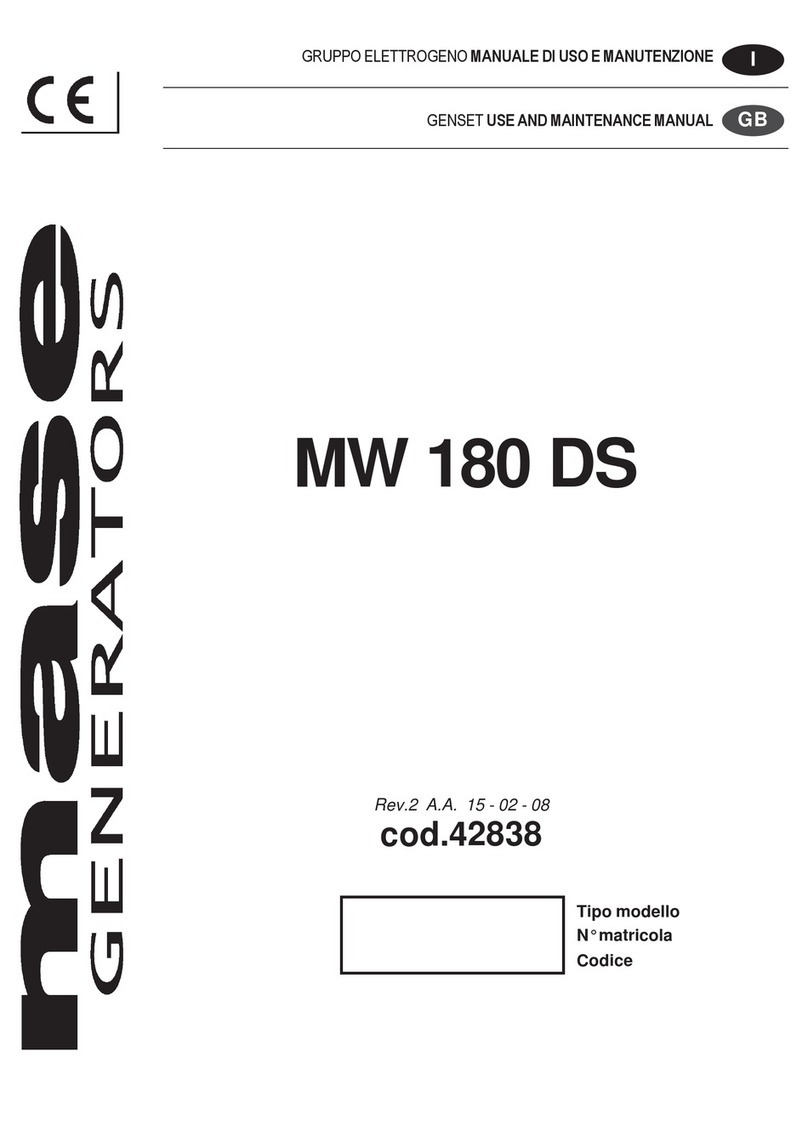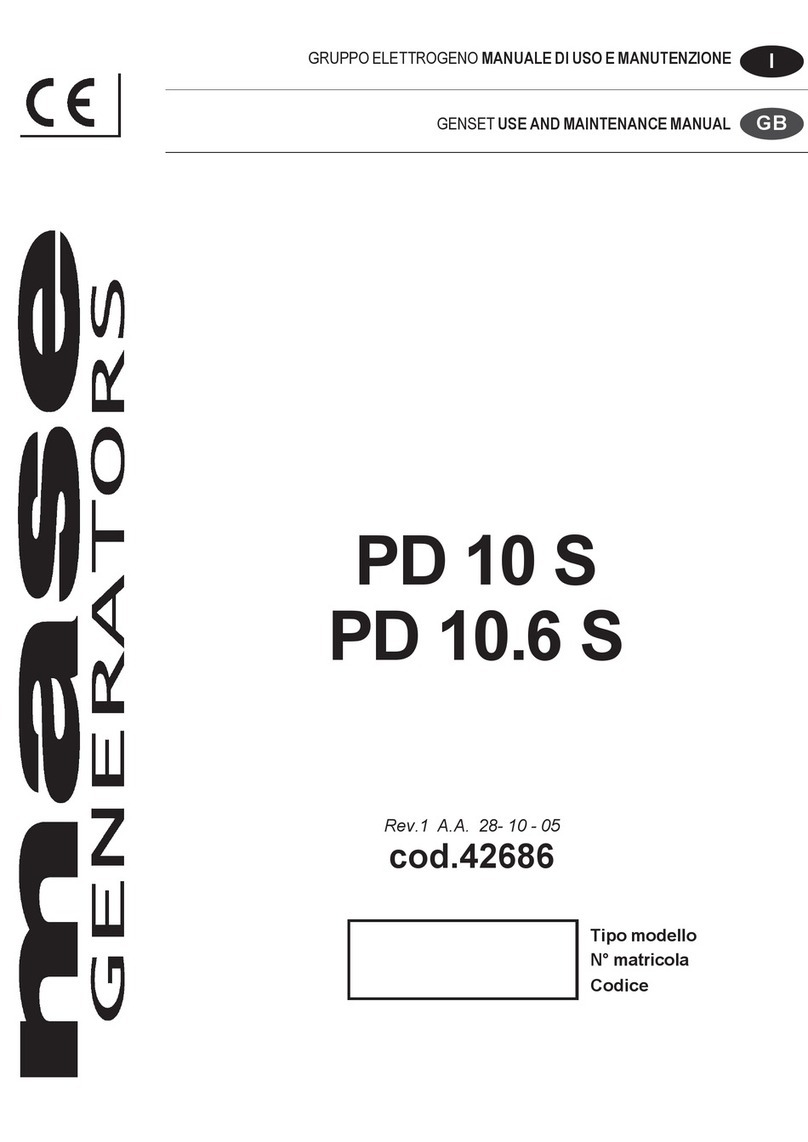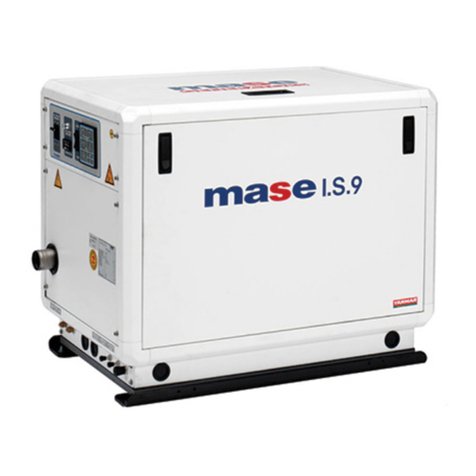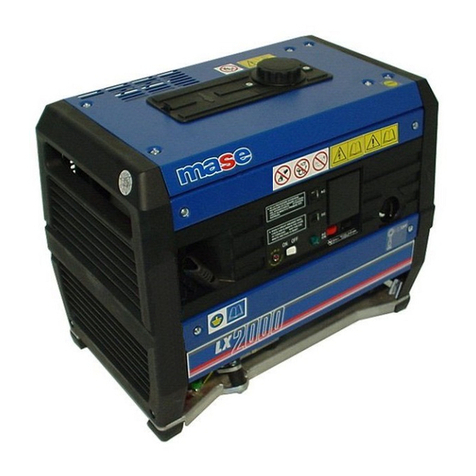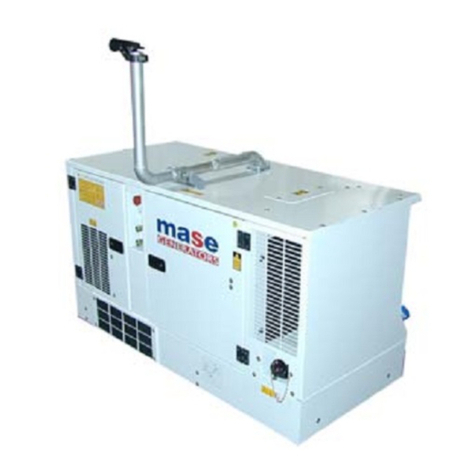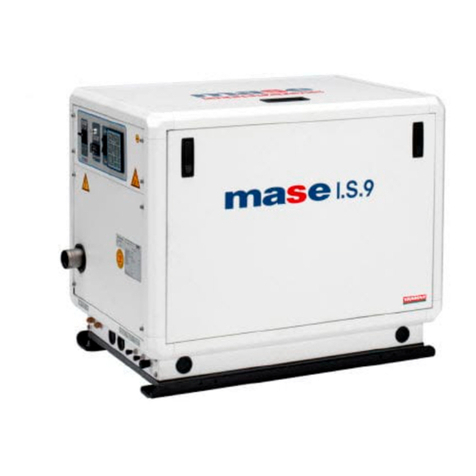
PD 50 - 70 - 7/4 S
- 2GB
GB
DEFINITIONS USED ................................................ 4
1 GENERAL INFORMATIONS ............................ 6
1.1 Conform use ................................................... 6
1.2 Residual risks ................................................. 6
1.3 Symbols on the generator group ..................... 7
1.4 Position of safety labels .................................. 8
1.5 General danger information ........................... 10
1.5.1 Danger of entanglement ................................ 10
1.5.2 Danger of burns ............................................ 10
1.5.3 Danger of harm to hearing ............................. 11
1.5.4 Danger of intoxication ................................... 11
1.5.5 Danger of fire or explosion ............................ 11
1.5.6 Danger if failing to use personal protection
devices ......................................................... 11
1.5.7 Danger caused by the engine starting ........... 12
1.5.8 Danger of electromagnetic radiation .............. 12
1.5.9 Danger of electrocution ................................. 12
1.5.10 Danger resulting from bad storage ............... 12
1.6 Reference documents ................................... 13
1.7 Referenceregulationsandlegislative provisions . 13
1.8 Marking ........................................................ 13
1.9 Identification of the generator unit ................. 13
2 GENERAL CHARACTERISTICS .................... 14
2.1 Configurations ............................................... 14
2.2 Composition of generator unit ....................... 14
2.3 Instrument panel ........................................... 14
2.4 Table of technical characteristics .................. 15
2.5 Noise emission ............................................. 16
3 INSTALLATION ............................................. 17
3.1 General installation criteria ........................... 17
3.2 Important information .................................... 17
3.2.1 Inspection of materials .................................. 17
3.2.2 Safety standards for diesel engines .............. 17
3.2.3 Foundations ................................................. 17
3.3 Exhaust plant ............................................... 17
3.3.1 Exhaust pipe ................................................ 17
3.3.2 Exhaust pipe design ..................................... 17
3.4 Ventilation .................................................... 18
3.5 Fuel system ................................................. 18
3.6 Electrical connection .................................... 18
3.6.1 Power Cable sizes ........................................ 18
3.6.2 Power cable layng ........................................ 18
3.6.3 Earthing ........................................................ 18
3.7 Outdoor installation ....................................... 19
3.8 Indoor installation ......................................... 20
4 USING THE GENERATOR ............................. 21
4.1 Preliminary checks ....................................... 21
4.2 Refuelling ...................................................... 21
4.3 Battery ......................................................... 21
4.4 Starting ........................................................ 22
4.5 Using the generator ...................................... 22
4.6 Stopping ....................................................... 22
4.7 Emergency stop ........................................... 22
5 PROTECTIONS AND WARNING SIGNALS .. 23
5.1 Protection against short-circuit and overload . 23
5.2 Engine protection module ............................. 23
5.3 Operation ...................................................... 23
6 MAINTENANCE ............................................. 24
6.1 Preamble ...................................................... 24
6.2 Ordinary engine maintenance ....................... 24
6.3 Engine oil change ......................................... 24
6.3.1 Changing oil filter .......................................... 24
6.4 Changing fuel filter ....................................... 24
6.4.1 System bleeding........................................... 25
6.5 Air filter cleaning/replacement ....................... 25
6.6 Coolant check .............................................. 25
6.7 Battery check ............................................... 25
6.8 Suction grid and vent cleaning ...................... 25
6.9 Scheduled maintenance table ....................... 25
6.10 Period of inactivity ........................................ 26
6.11 Wiring diagram list ........................................ 26
7 ANOMALIES, CAUSES AND REMEDIES ...... 27
7.1 How to order the spare sparts ....................... 27
8 TRANSPORT, STORAGE, LIFTING AND
HANDLING ................................................... 28
8.1 Transport and storage ................................... 28
8.2 Lifting and handling ....................................... 28
8.2.1 Lifting and handling with crane ...................... 28
8.2.2 Lifting and handling with forklift truck............. 28
8.3 Version with slow-drawn trailer ...................... 29
9 GUARANTEE AND RESPONSIBILITY ........... 30
9.1 Guarantee .................................................... 30
9.2 Limits of responsibility .................................. 30
10 DISPOSAL .................................................... 30
10.1 Disposal of the waste materials deriving from
maintenance and scrapping .......................... 30
11 WIRING DIAGRAMS ..................................... 30
11.1 Wiring diagram of PD 50 S version .............. 31
11.2 Wiring diagram of PD 70 S version .............. 32
11.3 Wiring diagram of PD 7/4 S version ............. 33
INDEX
